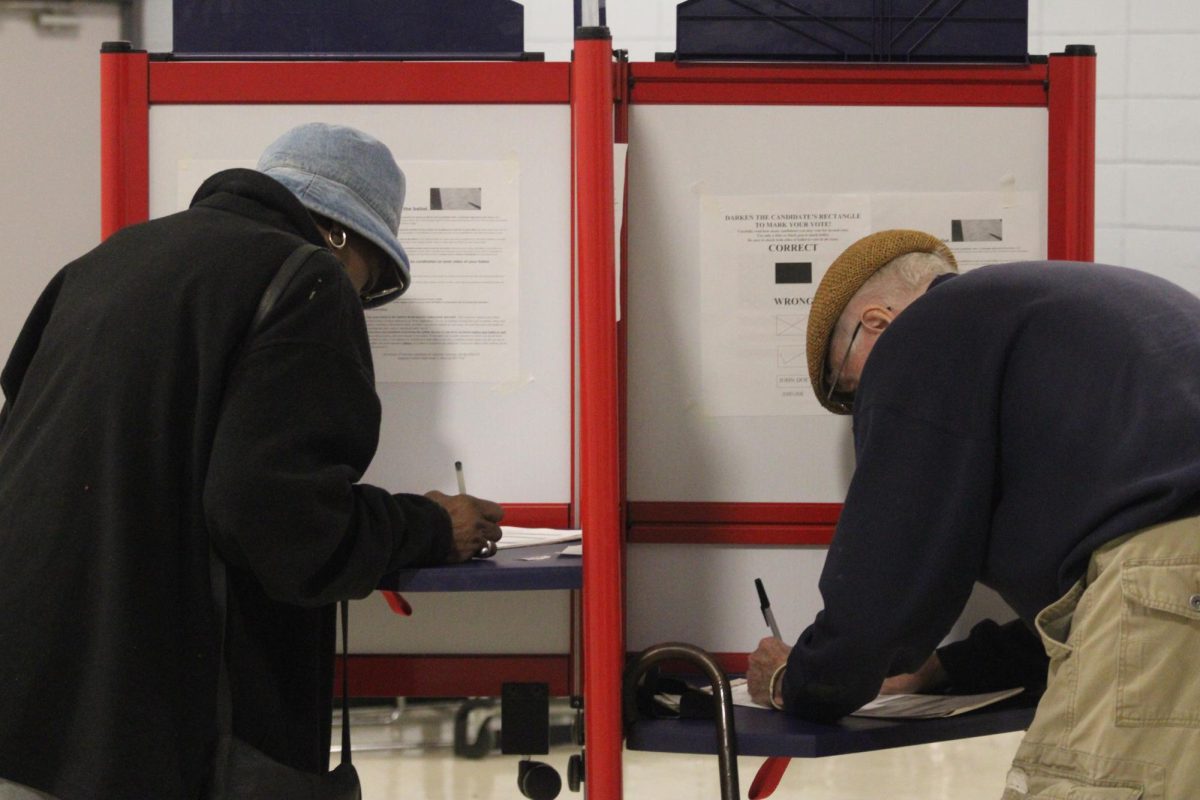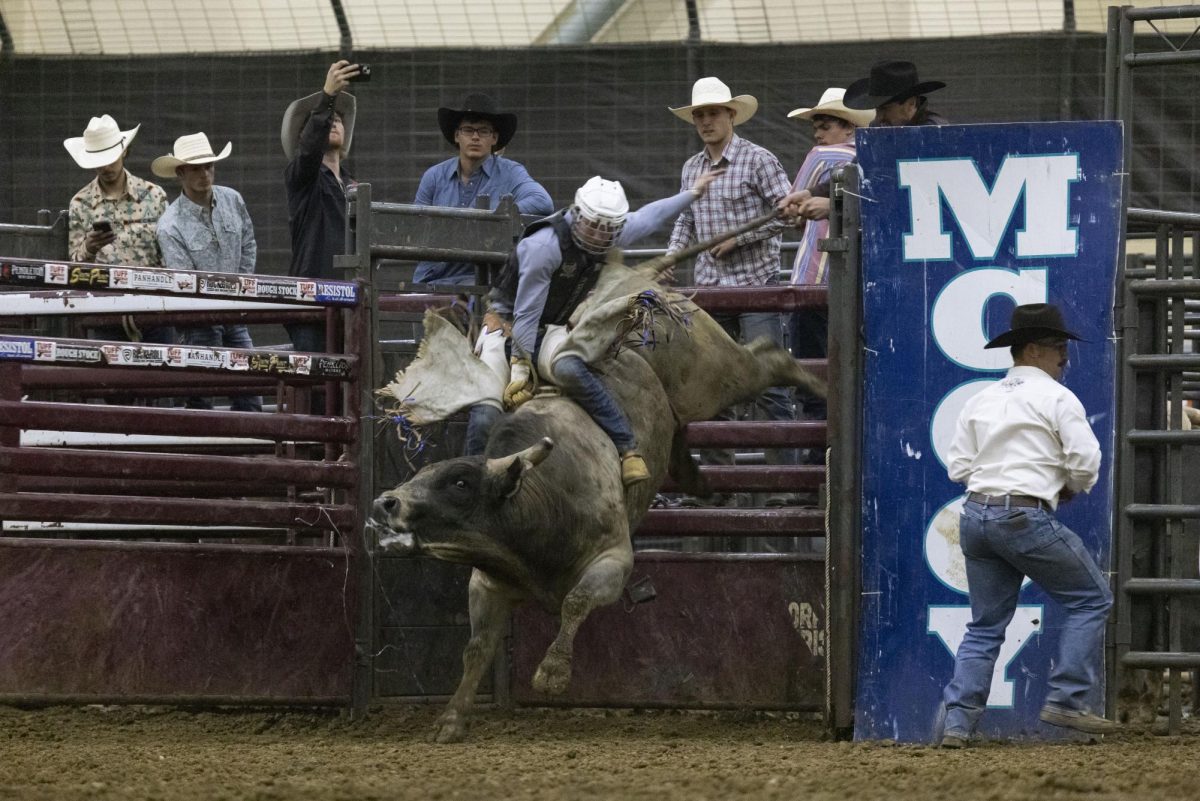Concussions are not something to play with
May 7, 2014
When spring practices ended, some players rested their bodies, others prepared for the long season ahead, but one player was told to relieve the stress on his brain.
Junior wide receiver Israel Lamprakes said he was told to reduce brain activity after he suffered a concussion during practice in March. He was in a “stalk block” drill, where receivers attempt to block a defensive back coming full speed.
Lamprakes said there were two times he felt concussion-like symptoms, ignoring them the first time.
Advertisement
“We hit helmet-to-helmet (on a Monday practice) and I was kind of out of it after the hit, but I didn’t think too much of it,” Lamprakes said. “The following practice, it happened again.”
“Same exact drill, same helmet-to-helmet contact, and this time I lost memory. I was in a daze throughout the whole practice. I lost memory of all that; watching film, I didn’t remember doing any of the stuff I was watching.”
Lamprakes, now symptom free, credited the athletic trainers for being strict about not allowing him to return to play until he recovered. However, the attempt to play through a concussion is a popular practice among football players.
Historically, concussions were not viewed as a reason to leave a game. In 2005, the NFL claimed players who had suffered one were not likely to suffer another if they continued to play; the opposite is now known to be true.
Concussions are linked to the degenerative brain disease chronic traumatic encephalopathy, or CTE, according a study performed at Boston University. CTE can only be diagnosed post-mortem and researchers at BU tested 85 brains of deceased athletes and war veterans for the disease.
Of the 85 brains, 68 came back with the disease. Thirty-five of the total brains donated were from former NFL players. Thirty-four of those tested positive for CTE, according to the study.
CTE was found in 15 more brains of former football players—nine played at the collegiate level and six played high school football. Symptoms for CTE include depression, mood swings, disorientation and dementia.
Advertisement*
SIU has student athletes like junior Malcolm Agnew, who are potential professional athletes. Agnew is rated as the 18th-best running back in the class of 2015 by CBS Sports, and is a likely draftee if he has a successful senior year.
He said he is troubled by the discoveries made about the impact of concussions.
“It’s very concerning,” he said. “Playing the game I love is very risky. You could really lose your life in a sense. You could lose who you are as a person.”
Stories published by PBS’s “Frontline” have exposed the public to mental problems that plague retired athletes such as former NFL linebacker Junior Seau. Seau became ornery and aggressive shortly before he committed suicide in May 2012. Signs of CTE were found in the 43 year old’s brain.
Jon Humphrey, the head physician for SIU athletics, said while the revelations of the stories surprised the public, the medical community knew about the dangers of concussions.
“In 2004, there were protocols for return to play from concussions and it’s improved since then,” he said. “The medical community has been recognizing it.”
Humphrey said the methods SIU uses for concussions are consistent with NCAA and medical suggestions.
Ryan Schneider, a graduate assistant athletic trainer, said concussions are diagnosed using the Standardized Assessment Concussion test and the Balance Error Scoring System. In the beginning of the season, players perform both tests to get an idea of their “baseline,” or scores when they are 100 percent healthy.
“The SAC has a cognitive assessment portion,” Schneider said. “We ask the athlete, ‘what month is it?’ If they get it right, give them a point; the date, give them a point; and so on.”
“The BESS focuses on balance and proprioception. It’s not only memory that gets affected, it’s also balance too,” he said. “Once you’re done with both, you add all the points up and get a total score and we can compare that to a baseline test.”
Schneider and Humphrey said the tests are effective but most importantly student athletes must be honest with trainers and coaches about their injuries.
Schneider said more information about concussions has helped facilitate the move away from playing through the pain.
“The problem 10, 15 years ago was that nobody thought it was a big deal,” he said. “It was just ‘You got a concussion, go out there and keep playing.’ Guys are starting to realize that if it does happen, you need to tell someone.”
Lamprakes and Agnew said they take concussions seriously, but some teammates do not want to part ways with the “tough guy” mantra associated with football players. Lamprakes said there are Salukis who would keep quiet if they suffered a concussion.
“Going out for a concussion in football is so frowned upon,” he said. “Most teammates were understanding, but there were a few that were like, ‘oh it’s just a concussion.’ That was just a select few, but I definitely think there’s some guys that would try to play with a concussion.”
Schneider had a message for those players.
“At some point you have to live your life,” he said. “You look at these interviews with professional football players that are suffering from mood swings and depression and some commit suicide, nobody wants to deal with that. You have to take care of yourself.”
Tyler Davis can be reached at tdavis@dailyegyptian.com, @TDavis_DE or at 539-3311 ext. 269.
Advertisement








